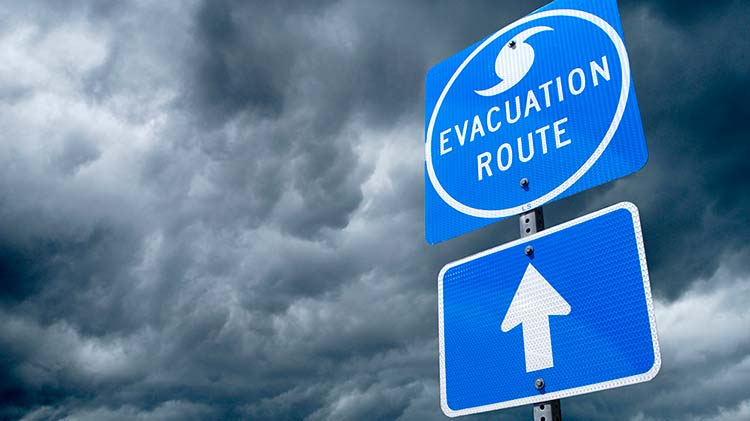Tips to help in preparing for a hurricane
Actions you can take to help protect your family, home and property when preparing for a hurricane.
The destructive force of a hurricane should never be taken lightly. These powerful storms can unleash devastating winds, torrential rains, storm surges and tornadoes causing extensive damage. And while you can't stop a hurricane from coming, you can strengthen your home against its brutal force. Here are hurricane preparedness actions you can take to help protect your property, and possibly even save your life.
Before a hurricane hits
Walk through and survey your home to create a home inventory of your possessions. This can be in the form of a written list, digital app or video — or a combination of any of these tools. Go with whatever makes it the easiest for you to document your belongings. An inventory can help during the claims process in the event of a covered loss.
Prepare with water. Fill containers, buckets or tubs so that you can flush your toilets and wash your hands in the event you are allowed to stay home and your water supply is cut off. It can also be helpful to have sealable, frozen bags of water to help keep frozen items cold should you lose power.
Prepare for a loss of power. Consider a generator for backup power. An emergency backup generator, whether a home standby or portable, can help keep some appliances running during a power outage — which could take days or even months before power is restored. And try to keep flashlights and batteries on hand.
How to prepare your house for a hurricane
Before a hurricane hits, add strength to the structure of your home to help prevent wind and water damage. And if a hurricane evacuation order is given, go to a shelter as directed by local authorities or consider friends or relatives outside of the evacuation area.
If you are evacuating, tell someone what time you left and where you’re going. Also, fill your vehicle’s gas tank or charge your vehicle’s battery, make sure you have enough supplies for an extended period, and avoid traveling near flowing streams and flooded areas. Don’t forget medications, identification, and cash.
Evacuate manufactured homes. Do not stay in a manufactured home during severe winds. They are easily overturned by high winds, and flying debris can puncture their light frames and exteriors.
Prepare windows and doors:
- Close your storm shutters or cover your windows with sturdy plywood.
- Ensure all exterior doors are secured and close all interior doors to compartmentalize and minimize damage.
Prepare your home's basement:
- Check your sump pump and make sure it's ready for the storm. Consider a house generator that may assist in further water mitigation in the event of a prolonged power outage.
Secure the garage door to your home:
- Consider protecting your garage door with a shutter or screen rated for wind pressure and debris impact.
Ensure your exterior property is prepared for the hurricane as well
- Store any non-secure items or non-structural elements from around your property in your home or garage, such as:
- Patio furniture
- Grills
- Garbage bins
- Porch swings
- Landscaping ornaments, such as sculptures or bird baths
- If you are leaving an RV or a vehicle, try to store it in a garage or secured facility.
- If you have a boat, moor it securely. If your boat is ashore in a jack stand, strap the boat down when possible.
If you've been affected by the recent hurricane in your area and need to report your claim, text the word “CLAIM” to 62789 to receive a link or you can report easily through statefarm.com®, our State Farm mobile app, contacting your State Farm agent or calling 800-SFClaim 800-732-5246800-732-5246.
If you determine your home sustained damage, to protect your property from further damage or loss, be sure to make reasonable and necessary temporary repairs. Keep an accurate record of repair expenses along with any photos of damage. If you have a covered loss, these repairs may be reimbursed by State Farm.
